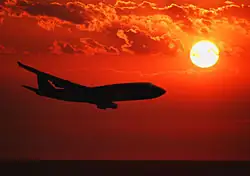
Want to receive stories like this every day? Subscribe to our free Deal Alert newsletter!
November 2010 was the second straight month with zero three-hour tarmac delays, according to the Department of Transportation (DOT). In a statement, the agency said, “This past October and November were the only months with no tarmac delays of more than three hours by the reporting carriers since the Department began collecting more comprehensive tarmac delay data in October 2008.”
As always, however, the real concern is flight cancellations, and what effect, if any, the DOT’s tarmac delay policy has on cancellation rates. Here’s the relevant data:
- November 2010: 3,755 cancellations, 0.7 percent of all 521,000 flights
- November 2009: 2,732 cancellations, 0.5 percent of all 509,000+ flights
- October 2010: 5,276 cancellations, 0.97 percent of all 545,000+ flights
All in all, not terrible. Year-over-year, cancellations did go up, both in raw numbers (mirroring a rise in flights) and percentage. Month-to-month, cancellations dropped significantly in raw numbers (again, mirroring a drop in flights) and percentage. Could it be that airlines are starting to get the hang of the DOT’s policy?
The dark cloud hanging over all this data? According to the DOT, there were 11 flights canceled after sitting on the tarmac for more than two hours. Last November, there were zero. This is by design, of course—airlines are required to return planes to the gate when it appears the flight will not take off within the three-hour limit. Still, 11 planes, accounting for hundreds of passengers, sat on the tarmac for over two hours only to turn around and go back to the gate. Not a fun experience for those aboard. The DOT says the number of flights canceled after two-hour-plus tarmac delays is up slightly since the policy took effect in late April—224 between May and November 2009 and 241 between May and November 2010.
So, with tarmac delays almost completely eliminated (only 12 between May and November) and cancellations holding relatively steady, is it time to declare the policy a success? Almost, but not yet. I, for one, am very curious to see if and how December and January’s storms influence these numbers. Until then, it’s simply too soon to evaluate the policy.
Readers, what do you think about these numbers or the success (or failure) of the policy overall?
We hand-pick everything we recommend and select items through testing and reviews. Some products are sent to us free of charge with no incentive to offer a favorable review. We offer our unbiased opinions and do not accept compensation to review products. All items are in stock and prices are accurate at the time of publication. If you buy something through our links, we may earn a commission.
Related
Top Fares From
Today's Top Travel Deals
Brought to you by ShermansTravel
Kenya: 14-Night Tour, Incl. Tanzania &...
smarTours
 vacation
$7125+
vacation
$7125+
7-Night Caribbean Round-Trip Cruise From Orlando:...
Norwegian Cruise Line
 cruise
$739+
cruise
$739+
Ohio: Daily Car Rentals from Cincinnati
85OFF.com
 Car Rental
$19+
Car Rental
$19+



